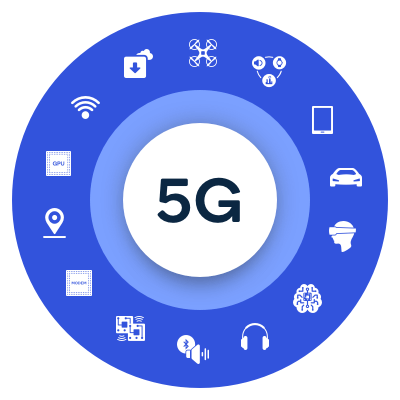5G Explained: What It Means for Everyday Internet Users

The advent of 5G technology represents a significant leap forward in mobile communication, promising to revolutionize how we interact with the internet and connected devices. It is the fifth generation of cellular network technology, following 4G LTE, 3G, and earlier standards. 5G is not simply about faster download speeds; it encompasses a suite of advancements that will profoundly impact various aspects of our daily lives.
Key Characteristics of 5G

5G distinguishes itself from previous generations of cellular technology through three primary characteristics: increased speed, lower latency, and greater capacity. These attributes collectively contribute to a vastly improved user experience and enable a wider range of applications.
Increased Speed
Perhaps the most widely recognized benefit of 5G is its significantly faster speeds. In ideal conditions, 5G can deliver download speeds that are several times faster than 4G LTE. This means that downloading large files, streaming high-definition video, and conducting online gaming become significantly smoother and more efficient. The actual speeds experienced by users will vary depending on factors such as network congestion, device capabilities, and proximity to a 5G base station. However, even under less-than-ideal circumstances, 5G generally offers a noticeable improvement over 4G LTE.
Lower Latency
Latency refers to the delay between sending a signal and receiving a response. 5G significantly reduces latency compared to 4G LTE. This is crucial for applications that require real-time responsiveness, such as online gaming, virtual reality, and augmented reality. With lower latency, these applications become more immersive and interactive. In the context of autonomous vehicles, reduced latency is critical for safe and reliable operation, enabling vehicles to react instantaneously to changing road conditions.
Greater Capacity
5G networks are designed to handle a much larger volume of data traffic than previous generations. This increased capacity is essential to support the growing number of connected devices, including smartphones, tablets, laptops, and Internet of Things (IoT) devices. With 5G, networks can accommodate more users and devices without experiencing significant performance degradation. This is particularly important in densely populated areas where network congestion can be a major issue.
How 5G Impacts Everyday Internet Users

The benefits of 5G extend beyond just faster download speeds. The technology has the potential to transform various aspects of our daily lives, from entertainment and communication to healthcare and transportation.
Enhanced Entertainment Experiences
5G facilitates a richer and more immersive entertainment experience. High-definition video streaming becomes seamless, even on mobile devices. Augmented reality and virtual reality applications become more practical and engaging, allowing users to interact with digital content in new and exciting ways. Cloud gaming benefits significantly from the low latency and high bandwidth of 5G, enabling gamers to play demanding titles on their mobile devices without experiencing lag or performance issues.
Improved Communication
5G enhances communication through higher quality video calls and more reliable data connections. Real-time translation and transcription services become more accurate and efficient, facilitating communication across language barriers. Furthermore, 5G enables new forms of communication, such as holographic projections and immersive virtual meetings.
Advancements in Healthcare
5G has the potential to revolutionize healthcare through remote patient monitoring, telemedicine, and robotic surgery. Remote monitoring allows healthcare providers to track patients' vital signs and health conditions in real-time, enabling proactive interventions. Telemedicine allows patients to consult with doctors remotely, reducing the need for in-person visits. Robotic surgery, enabled by the low latency of 5G, allows surgeons to perform complex procedures remotely with greater precision and control.
Transforming Transportation
5G is a key enabler for autonomous vehicles, providing the reliable and low-latency communication necessary for safe and efficient operation. Autonomous vehicles rely on real-time data exchange with other vehicles, infrastructure, and cloud-based systems. 5G facilitates this communication, enabling vehicles to react instantaneously to changing road conditions and potential hazards. Furthermore, 5G enables smart traffic management systems that can optimize traffic flow and reduce congestion.
The Future of 5G
5G technology is still in its early stages of deployment, and its full potential has yet to be realized. As 5G networks continue to expand and mature, we can expect to see even more innovative applications and services emerge. Further advancements in 5G technology, such as millimeter wave (mmWave) technology and network slicing, will further enhance performance and enable new use cases. The ongoing development and deployment of 5G will continue to shape the future of mobile communication and connected devices, transforming how we live, work, and interact with the world around us.

Comments
Post a Comment